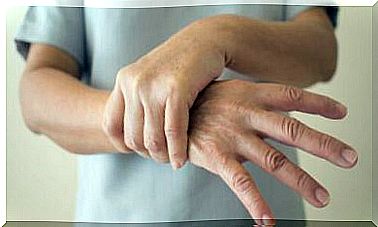Self-sacrifice And Family
There are families with a self-sacrificing culture. This type of family teaches their family members that they “should” sacrifice for the sake of the family. They promote the idea of self-sacrifice, that an individual must adapt to their own needs and desires according to the family’s goal of unity.
The relationship principles in this type of family obey the law of “self-sacrifice for acceptance.” In other words, you need to prioritize the needs of others over your own to avoid becoming the black sheep. The love and benefits the family provides depend on your life being a continuous chain of commitments.
Who is responsible for self-sacrifice?
We see this type of behavior primarily in parents. It is mainly those who are self-sacrificing or are perceived as martyrs. They act on the idea that their child’s happiness is paramount. The needs that their children express are what guide the upbringing of children.
As the family grows and this idea of self-sacrifice matures, the next generations will inherit it as well. All subsequent family members will be responsible for caring for the family. They expect a life of sacrifice and abandonment for the common good.

When the parents are the ones who sacrifice themselves
When parents are still self-sacrificing, their children may feel free to form a different vision of life. They rebel in thoughts, words and deeds, and try to get a healthier perspective on relationships.
So, as Giorgio Nardone says, “children ask their parents to have more fun, go out, travel… But the parents answer that they have no choice. If the children want to dress in the latest fashion, study, have their own car, etc., the parents must sacrifice. They have to give up many other things. ”
We can see that their view of the world and family is about a particular idea. That idea is to always prioritize the needs and desires of others. They consider this essential to ensure stability and acceptance from the family.

Other models of self-sacrificing families consist of pairs of “pathological altruists” and “pathological narcissists”. In these dyads, each individual takes pleasure in the other’s sacrifice. Each member has a role, and can play the victim card to gain the upper hand in the relationship.
There are other, equally disturbing combinations. For example, in some families, they compete to see who can sacrifice the most. The goal of self-sacrifice is to achieve a kind of external goal (such as buying a house.) They come up with the perfect excuse to avoid joy in the present. The goal? Increase future enjoyment.
No matter what the origin of the couple that makes up the family, these relationship patterns are negative. This is because it reduces the importance of love for oneself and healthy self-esteem in family members.
“Self-sacrifice” and “I should” are words that make up a lifestyle
In the most extreme cases, there are some words that come up often. The words “victim” and “should” give a defining impression of some people’s philosophy of life. When the “pathological altruist” is a parent, he / she obliges the child (the pathological narcissist) to “take what they can get”. Nardone says:
This is a kind of personality pattern that comes over the person and which is incredibly exhausting. In some cases, people who grew up in this environment find it very difficult to be satisfied with their need for reciprocity. This is because they learn to let their desires remain in the background.
The negativity of self-sacrifice
People with this attitude often say things like “you do not understand my victim, if it were not for me…” They take on the role of the victim. Their lives are buried. They live a limited life and always bury their own lives and interests.
In children who adopt this model of self-sacrifice for the family, the emotional legacy is an inability to enjoy the present. They take on other dreams as if they were their own. They feel hopeless and have difficulty gaining the self-knowledge to change their situation.
Other people are desperately trying to leave their suffocating family atmosphere. They can no longer cope with blackmail and worries that drown out their own needs. Others are constantly searching for change, others are learning to get along, and so on.
It is important to identify these relationship patterns in self-sacrificing families. It is the first step towards personal growth and defining priorities. This is something we should all think about every day.









